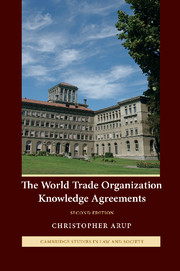8 - The case of communications media
Published online by Cambridge University Press: 23 February 2010
Summary
Chapter 8's case study is the new online communications media. The chapter detects a broad trend towards global integration of the media. But the openness of the technology itself, the conflicting economic interests which the participants bring to bear (including contradictions within their own positions), and the varying cultural mores of production and distribution, all suggest that pluralism is unlikely to be eliminated.
The chapter attempts to relate three legalities that shape most directly the pattern of the flows through this media. It identifies complex and shifting relationships between industry-specific regulation, intellectual property and competition law within the context of trade liberalisation. The chapter suggests how each of these legalities has been employed, both to stimulate the flows and to capture their value. Two connected issues are pursued to illustrate the significance of the different legalities. The first issue is the freedom to communicate various kinds of content online; the second is the conditions of access to the service and technology platforms needed for its communication. The nature of the field provides an opportunity to consider the influence of the two WTO agreements in conjunction. So this chapter brings each of the strands of the book together.
Globalisation is undermining the competence of the kind of industryspecific regulation that national governments have favoured in the past, such as public monopolies, licensing schemes and local content quota. Chapter 8 examines the role which the GATS has played in obtaining commitments to roll back this regulation where it would deny foreign service suppliers national treatment and market access.
- Type
- Chapter
- Information
- The World Trade Organization Knowledge Agreements , pp. 423 - 510Publisher: Cambridge University PressPrint publication year: 2008

